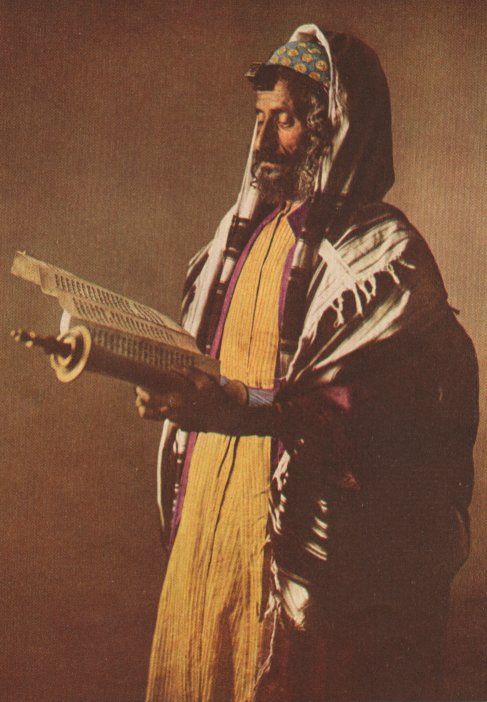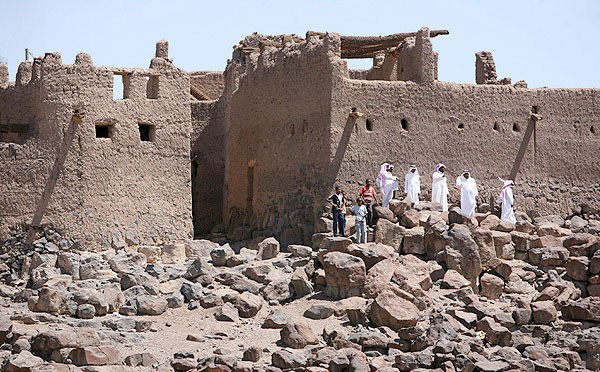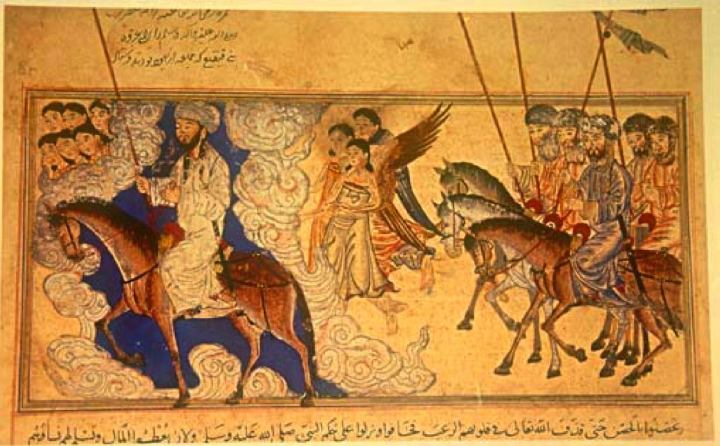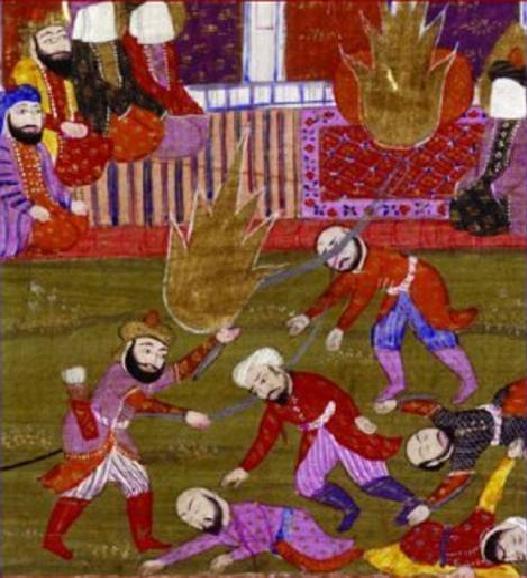
ONCE UPON A TIME, JEWS LIVED IN MEDINA…
When the Prophet Muhammad (peace be upon him) came to this city at the invitation of the Medinans and established an Islamic city-state, there were Muslims, polytheist Arabs, Jews, and Christians living here.
An agreement was made with them, stipulating that these communities would live together as allies, with guarantees for the safety of life, property, and religious freedom. In cases of dispute, the Prophet would act as judge. Legal experts consider the Medina Charter to be the oldest written constitution in history.
However, the agreement was short-lived. The first reason was the conversion of polytheist Arabs in Medina to Islam, and the second was that the Jews violated the covenant.
An Assassination Attempt on the Head of State
The Jews who had come from Palestine due to the Roman invasion comprised nearly half of the population. They spoke Arabic and gave their children Arab names. Thanks to their intelligence and industriousness, they amassed significant wealth. Because they shared monotheism and the tradition of prophets, it was expected they would quickly believe in Islam. But this did not happen. Initially, the Jews reacted cautiously to this new call, then shifted to a hostile stance.
Islam demonstrated significant affinity toward Jews and Christians. This community, known as Ahl al-Kitab (the People of the Book), held legal equality with Muslims. Their lives and property were secure, and they had freedom of religion and conscience. Their meat was permissible to eat, and marriage with their women was allowed.
In Medina, there were three important Jewish tribes: Banu Qaynuqa, Banu Nadir, and Banu Qurayza. Jews also lived in Khaybar to the north of Medina. Qaynuqa means “goldsmiths,” and they were engaged in trade in Medina's market. Nadir, meaning “green plant,” had date groves. Qurayza was named after a plant used in tanning, and they were leatherworkers.

Following the victory at Badr, a dispute broke out in the Medina market after a Qaynuqa man assaulted a Muslim woman. The incidents escalated, leading to the tribe’s neighborhood being besieged. After fifteen days, they surrendered. No one was killed, and all migrated to Adhri'at (Daraa), near Syria. The Prophet Muhammad permitted them to visit Medina for up to three days for any necessary business. They also came to assist the Muslims at the Battle of the Trench and Khaybar.
The fate of the Qaynuqa tribe worried the Nadir tribe, leading them to ally with the polytheists of Mecca. They invited the Prophet Muhammad to a meeting with the intent to assassinate him. The plot was revealed when a woman from the Nadir tribe inadvertently spoke about it among the Ansar (Medina’s Muslim helpers).
The Muslims besieged the Nadir tribe’s territory, and the Prophet Muhammad invited them to accept Islam. Those who accepted were pardoned, while the rest had to leave the city, taking only their weapons and leaving behind all other possessions. They moved to Adhri'at or Khaybar. None were killed. In contrast, in recent history, even an attempt to assassinate a head of state is punishable by death.
Braying Like a Donkey…
In fertile Khaybar, 184 km north of Medina, lived a large, wealthy Jewish population engaged in agriculture. Malaria was common due to the humidity. When Arabs of the Jahiliyyah (pre-Islamic ignorance) asked how they could live healthily there, the Jews claimed one had to bray like a donkey ten times upon entering the city; the Arabs believed this and the Jews watched with amusement. An Arab poet even said, “I would rather die of malaria than bray like a donkey!” The people of Khaybar were allied with the polytheists of Mecca.
In the 7th year of the Hijri calendar, the Prophet Muhammad secured his rear with the Treaty of Hudaybiyyah and marched on Khaybar to eliminate this ongoing threat. Khaybar had 20,000 warriors, 8 fortified castles, and catapults, but the Muslim forces overcame them. One by one, the fortresses fell. The inhabitants were allowed to leave with whatever they could carry on their pack animals or remain in place.
Part of Khaybar was granted autonomy, and the Prophet Muhammad married Safiyya, the daughter of one of their leaders. After Khaybar, the Jewish settlements of Wadi al-Qura and Fadak also surrendered. Later, Jews in Yemen and Oman accepted Islamic rule without resistance.

The Banu Qurayza Jews lived in a fortified castle approximately 15 km from Medina. The Banu Nadir considered themselves superior. If a Qurayza killed a Nadir, he would be subject to qisas (retaliation), while the reverse would be settled with blood money. The Prophet Muhammad abolished this inequality. Yet the Qurayza proved ungrateful. When the Banu Nadir breached their agreement, the Qurayza assisted them.
While the Banu Nadir were expelled, the Qurayza were forgiven. Despite this, before the Battle of the Trench, they broke their covenant by aiding the Meccans and prepared to launch an attack on Medina. After the Muslims won the Battle of the Trench, an expedition was undertaken against Banu Qurayza. The fortress fell, and the Banu Qurayza men and women were captured. They were given the option to select a judge, choosing Sa’d ibn Mu’adh, a long-time ally from Medina who was well-versed in the Torah. He passed a judgment based on the Torah (Deuteronomy, 20:10-16), which the Qurayza could not contest: the men were executed, and the women and children were taken captive.
The Muslims did not repeat the mistake made with the Banu Nadir. This incident has been greatly exaggerated, especially by Europeans, to portray Muslims as cruel. In history, all defeated combatants are taken prisoner. The Middle Ages were a time when prisoners were often executed. Islamic law grants the ruler four options regarding captives: execution, enslavement, ransom, or citizenship. Execution was not the preferred choice among Muslims throughout history; otherwise, it would have been applied to the Jews of Qaynuqa, Nadir, and Khaybar as well.

Önceki Yazılar
-
VIENNA NEVER FORGOT THE TURKS10.12.2025
-
THE FIRST UNIVERSITY IN THE WORLD WAS FOUNDED BY MUSLIMS3.12.2025
-
WHO BETRAYED PROPHET ISA (JESUS)?26.11.2025
-
IT HAS BEEN MORE THAN 100 YEARS SINCE ITS ABOLITION, BUT... IS THE CALIPHATE BEING REESTABLISHED?19.11.2025
-
GREETINGS TO YOU, O OTTOMAN SANJAK!…12.11.2025
-
ROTHSCHILDS BROUGHT THE END OF THE OTTOMAN EMPIRE!5.11.2025
-
SHEIKH BEDREDDIN, SON OF THE QADI OF SIMAVNA29.10.2025
-
THE ROOTS OF THE ENGLISH POLITICIAN IN TURKEY – THE TRAGIC END OF ALI KEMAL BEY22.10.2025
-
WHERE IS THE RED APPLE?15.10.2025
-
THE ABBASIDS IN ANATOLIA1.10.2025